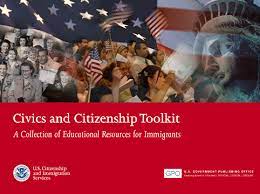
Empowering Citizens: The Significance of Civic Education Resources
The Importance of Civic Education Resources
In today’s society, civic education plays a crucial role in shaping informed and engaged citizens. Civic education resources provide individuals with the knowledge and tools necessary to understand their rights and responsibilities as members of a democratic society.
One key aspect of civic education is understanding the structure and functions of government at various levels – local, state, and federal. Resources such as online courses, textbooks, and interactive websites help individuals grasp the complexities of the political system and how they can actively participate in it.
Moreover, civic education resources also cover topics like the importance of voting, civil rights, public policy issues, and community engagement. By educating individuals on these subjects, these resources empower them to make informed decisions, advocate for causes they believe in, and contribute to the betterment of society.
For students in particular, access to high-quality civic education resources is essential for developing critical thinking skills and a sense of civic responsibility. Schools that incorporate civics into their curriculum help students become active participants in democracy from a young age.
Furthermore, civic education resources are valuable for adults who may have missed out on formal civics education during their schooling years. These resources provide them with an opportunity to enhance their understanding of government processes and become more engaged citizens.
Overall, civic education resources serve as a cornerstone for building a well-informed citizenry that actively participates in democratic processes. By investing in these resources and promoting their accessibility, we can create a more informed, empowered, and civically engaged society.
Essential Guide to Civic Education: Teaching Strategies, Definitions, Methods, and Core Components
- How do you teach civics?
- What do you mean by civic education?
- What are the methods used in teaching civic education?
- What are the three components of civic education?
How do you teach civics?
Teaching civics involves a multifaceted approach that aims to educate individuals on the rights and responsibilities inherent in a democratic society. Educators often employ interactive methods such as role-playing, debates, case studies, and community projects to make civics engaging and relevant to students. By incorporating real-world examples, current events, and discussions on civic issues, teachers can help students develop critical thinking skills, empathy, and a sense of civic duty. Additionally, utilizing multimedia resources, guest speakers, and field trips can enhance the learning experience and provide practical insights into how government functions at various levels. Ultimately, teaching civics is about empowering individuals to become informed and active participants in shaping their communities and society at large.
What do you mean by civic education?
Civic education refers to the learning process through which individuals acquire knowledge and understanding of their rights, responsibilities, and roles within a democratic society. It encompasses teachings on government structures, political processes, civil liberties, and community engagement. Civic education aims to empower individuals to actively participate in civic life, make informed decisions, advocate for social issues, and contribute positively to the functioning of their communities and the broader society. By promoting civic education, we foster a more informed and engaged citizenry that is essential for sustaining a healthy democracy.
What are the methods used in teaching civic education?
Teaching civic education encompasses a variety of methods aimed at engaging learners and fostering a deep understanding of democratic principles and civic responsibilities. Some common methods used in teaching civic education include interactive discussions where students can actively participate in exploring real-world issues, simulations that simulate democratic processes such as mock elections or town hall meetings, service-learning projects that encourage students to apply their knowledge through community service, and the use of multimedia resources like videos and online platforms to enhance learning experiences. These diverse methods not only educate individuals about the workings of government and society but also empower them to become informed and active participants in shaping their communities.
What are the three components of civic education?
Civic education comprises three essential components that are crucial for fostering informed and engaged citizens. The first component focuses on understanding the structures and functions of government at various levels, including local, state, and federal levels. The second component emphasizes the importance of civic participation, encouraging individuals to exercise their rights and responsibilities as active members of a democratic society through voting, advocacy, and community engagement. Lastly, the third component involves cultivating critical thinking skills and promoting a sense of civic responsibility among individuals, empowering them to make informed decisions and contribute positively to their communities. These three components together form the foundation of civic education, equipping individuals with the knowledge and tools necessary to participate meaningfully in democratic processes.









-
Tagged analysis, bridge gaps, comprehensive news coverage, coverage, dialogue